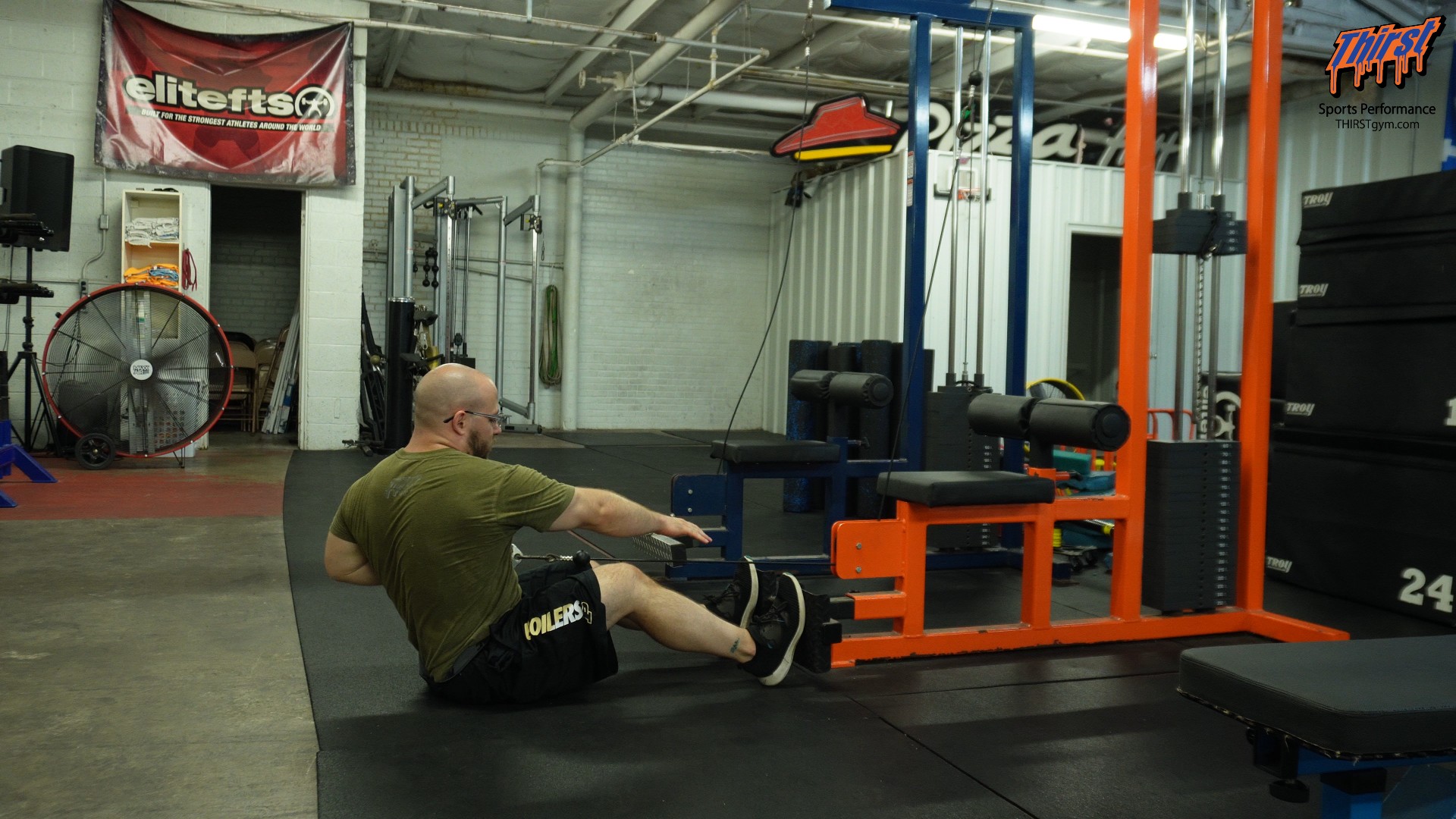Single Arm Seated Cable Row with Opposite Reach: The Ultimate Athletic Upper Back Exercise
If you’re looking to build a stronger, more muscular upper back while maintaining athletic movement patterns, the single arm seated cable row with opposite reach deserves a place in your training arsenal. This dynamic variation of the classic cable row combines traditional strength training with rotational movement, making it perfect for athletes and fitness enthusiasts who want to develop both size and functional mobility.
Watch the video below on how to maximize this exercise.
What Is the Single Arm Seated Cable Row with Opposite Reach?
The single arm seated cable row with opposite reach is an innovative variation of the traditional seated cable row that incorporates cross-body movement and rotational elements. Unlike standard bilateral cable rows, this exercise challenges your body to work unilaterally while engaging your core and promoting rib cage mobility through controlled rotation.
This exercise stands out because it bridges the gap between pure strength training and athletic movement patterns, making it an excellent choice for those seeking both hypertrophy and functional benefits.
Equipment and Setup Requirements
To perform this exercise effectively, you’ll need minimal but specific equipment:
Essential Equipment:
- Single arm handle (also known as a D-handle attachment)
- Cable machine with adjustable height or seated cable row station
- Floor space or seated cable row bench
The beauty of this exercise lies in its simplicity. Whether you have access to a dedicated seated cable row machine or just a basic cable pulley system, you can adapt this movement to your available equipment. Some practitioners prefer sitting directly on the floor for enhanced stability, while others utilize traditional seated cable row benches.
Proper Exercise Technique and Form
Understanding the correct technique is crucial for maximizing the benefits of this exercise while minimizing injury risk. Here’s a detailed breakdown of the movement:
Starting Position: Begin by positioning yourself in front of the cable machine with your legs extended but not completely locked out. Maintain a slight bend in your knees to ensure proper biomechanical positioning. Grasp the single arm handle with one hand, establishing a firm grip while keeping your opposite arm free for the reaching component.
The Movement Pattern: The exercise consists of two simultaneous actions that must be coordinated smoothly. As you pull the cable toward your belly button using standard rowing mechanics, simultaneously reach across your body with your opposite arm. This creates a dynamic cross-body pattern that engages multiple muscle groups while promoting rotational mobility.
Critical Form Points: Focus on maintaining constant tension throughout the movement without allowing the weight stack to completely rest between repetitions. Your rib cage should experience controlled twisting and lengthening at the end range of motion, which is where much of the exercise’s unique value lies. The movement should flow smoothly without jerky or choppy transitions.
Primary Muscle Groups and Benefits
This exercise delivers comprehensive upper body development while addressing often-neglected movement patterns:
Primary Target Muscles:
- Latissimus dorsi (lats)
- Rhomboids and middle trapezius
- Posterior deltoids
- Biceps and forearm muscles
Secondary Benefits: The rotational component engages your core stabilizers and promotes rib cage mobility, which is essential for athletic performance and overall spinal health. The unilateral nature of the exercise also helps address muscle imbalances that commonly develop from bilateral training patterns.
Why This Exercise Outperforms Traditional Cable Rows
The opposite reach component transforms this from a simple pulling exercise into a comprehensive movement pattern. Traditional cable rows, while effective for building back strength, often allow for compensatory movement patterns that can reduce their effectiveness. The cross-body reach keeps your torso more honest and prevents common cheating mechanisms like excessive torso lean or shoulder elevation.
Additionally, the rotational element maintains rib cage function and mobility, which is crucial for athletes whose sports require rotational power and fluid movement patterns. This makes it particularly valuable for runners, golfers, tennis players, and other rotational sport athletes.
Programming Recommendations
For optimal results, incorporate this exercise using these evidence-based parameters:
Volume and Intensity: Perform 3-4 sets of 8-12 repetitions per side, focusing on controlled movement quality over heavy loading. This rep range optimally balances hypertrophy stimulus with movement skill development.
Placement in Your Routine: This exercise works exceptionally well as a primary or secondary pulling movement in upper body or full-body training sessions. Its athletic nature makes it suitable for both strength-focused sessions and movement preparation routines.
Progression Strategies: Begin with moderate resistance to master the movement pattern before increasing load. Focus on smooth coordination between the rowing and reaching components, gradually increasing resistance as your movement quality improves.
Common Mistakes and Corrections
Avoid these frequent errors to maximize exercise effectiveness:
- Allowing the weight to completely rest between repetitions
- Rushing through the movement without proper control
- Neglecting the opposite arm reach component
- Using excessive momentum instead of controlled muscle action
Integration with Athletic Training
This exercise particularly shines in athletic development programs where maintaining mobility while building strength is paramount. The combination of pulling strength and rotational mobility makes it invaluable for athletes who need to balance hypertrophy goals with functional movement requirements.
The single arm seated cable row with opposite reach represents intelligent exercise selection that addresses multiple training goals simultaneously, making it a valuable addition to any comprehensive training program focused on building both strength and athletic movement capacity.








